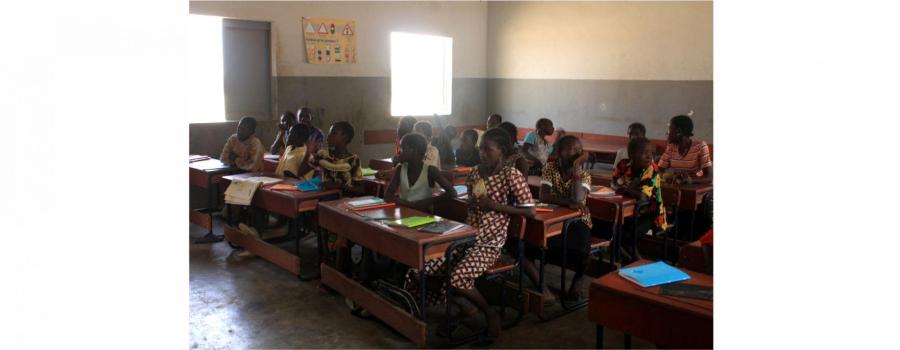February 4 marks World Cancer Day
You are here

Urine testing offers solution to monitor the impact of HPV vaccination
Regular cervical screening significantly decreases cervical cancer incidence rates. Evidence now also demonstrates the potential of Human Papillomavirus (HPV) vaccines in reducing the burden of this cancer type.
National HPV vaccination programs were implemented in many high-income countries in early 2010, and aimed at protecting women against four types of HPV infections, two of which (HPV16 and 18) are linked to cause cervical cancer (Franceschi et. al, 2016). In order to roll out HPV vaccination programs at a larger scale and across more developing countries, quick and simple impact studies are required to evaluate the overall effectiveness of the vaccine in HPV infection occurrence (Franceschi et. al, 2018).
In recent years, major progress has been made in detecting HPV DNA in urine, and its link to cervical cancer. Urine sampling offers many advantages in comparison to the traditional clinician-collected cervico-vaginal samples. One benefit is that urine can be self-collected, eliminating the need for specialized personnel for sample collection. In many settings, especially, where women are reluctant to have a pelvic examination due to cultural reasons, independent sample collection offers a suitable solution. Furthermore, urine sampling is non-invasive, relatively inexpensive and quick, allowing repetitive collection and analysis on a frequent basis (Franceschi et. al, 2018).
An example of the feasibility of urine collection in monitoring HPV vaccine efficiency is provided by studies in Bhutan and Rwanda (Franceschi et. al, 2016). Bhutan (2010) and Rwanda (2011) were among the first countries in Asia and Africa respectively to roll-out HPV vaccination programs for young school girls. One round of catch-up vaccination campaigns was also set-up in Bhutan in 2010 for 13-18-year olds and three in Rwanda in 2011, 2012 and 2013 for girls aged 15 or older.
To understand early effects of the vaccination program in this population, HPV urine surveys were conducted in both countries. Around 1,000 women were recruited in each country. Participants self-collected a urine sample using Colli-Pee, Novosanis’ innovative medical device suited to capture first-void urine (first 20ml of urine flow). First-void urine contains larger amounts of DNA particles compared to midstream urine, allowing for more accurate detection of HPV. Additionally, using a urine capturing device like Colli-Pee also allowed standardization in urine collection, essential to maximise HPV DNA detection (Vorsters et. al, 2014). The device also enabled the sample to flow immediately into a pre-filled urine-conservation medium preventing DNA degradation (Tshomo et. al, 2017).
Following sample collection, students also filled out a survey relating to personal information, history of sexual activity and if/when they were HPV vaccinated. The results concluded that HPV presence in urine was significantly associated with sexual activity. In both Bhutan and Rwanda HPV6/11/16/18 prevalence was lower in vaccinated than in unvaccinated participants (Franceschi et. al, 2016). Moreover, similar results were observed when testing HPV in urine and paired cervical cell samples in women in Bhutan, validating the possibility of using a urine self-collection protocol to test for HPV (Tshomo et. al, 2017).
While more research on larger populations are required, these findings mark the potential beginning of a new methodology to monitor HPV and HPV vaccination effectiveness, which in turn, could accelerate growth of vaccination policies.
References:
- Franceschi S, Chantal Umulisa M, Tshomo U, Gheit T, Baussano I, Tenet V, Tshokey T, Gatera M, Ngabo F, Van Damme P, et al. Urine testing to monitor the impact of HPV vaccination in Bhutan and Rwanda. Int J Cancer. 2016 Aug 1;139(3):518-26. doi: 10.1002/ijc.30092. Epub 2016 Apr 15. PubMed PMID: 26991686.
- Franceschi S, Clifford GM, Baussano I. Options for design of real-world impact studies of single-dose vaccine schedules. Vaccine. 2018 Aug 6;36(32 Pt A):4816-4822. doi: 10.1016/j.vaccine.2018.02.002. Epub 2018 Mar 21. PubMed PMID: 29571973; PubMed Central PMCID: PMC6066174.
- Tshomo U, Franceschi S, Tshokey T, Tobgay T, Baussano I, Tenet V, Snijders PJ, Gheit T, Tommasino M, Vorsters A, et al. Evaluation of the performance of Human Papillomavirus testing in paired urine and clinician-collected cervical samples among women aged over 30 years in Bhutan. Virol J. 2017 Apr 8;14(1):74. doi: 10.1186/s12985-017-0744-2. PubMed PMID: 28390433; PubMed Central PMCID: PMC5385028.
- Vorsters A, Van Keer S, Van Damme P. The use of urine in the follow-up of HPV vaccine trials. Hum Vaccin Immunother. 2015;11(2):350-2. doi: 10.4161/21645515.2014.995058. PubMed PMID: 25664398; PubMed Central PMCID: PMC4514373.
